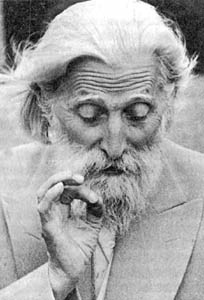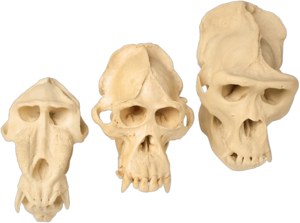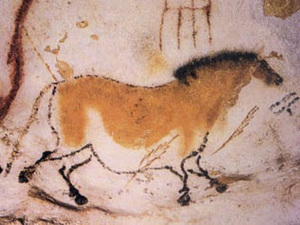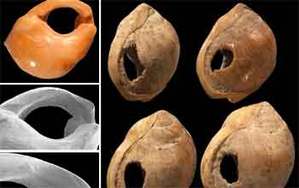Awakening

“Man does not evolve, he awakens.”
–Darwin Gross (American Spiritual Teacher, Musician and, from 1971-1983, Leader of Eckankar, 1928-)
Seeing in Cycles

“What really matters are not fascinating details to be memorized by the curious mind, but the gaining of a whole view of cosmic, planetary, and human evolution. It is to be able to ‘see’ or even feel this evolution, with its interconnecting cycles and subcycles, microcosmic as well as macrocosmic.”
–Dane Rudhyar (a.k.a. Daniel Chenneviere, French-born American Composer, Theosophist and Astrologer, 1895-1985)
“Occult Preparations for a New Age (A Quest book)” (Dane Rudhyar)
Evolution of the Human Soul

“Everything on earth is subject to the laws of evolution. And this is particularly true for the human soul.”
–Rudolf Steiner (Croatian-born Austrian Mystic, Occultist, Social Philosopher, Architect and Founder of Anthroposophy, 1861-1925)
Intelligent Atoms

“The more advanced the evolution of a certain form [of life] is, the more intelligent the atoms comprising it. In order to reach a higher stage of development, the atom has to pass through the four Kingdoms – the mineral kingdom, the plant kingdom, the animal kingdom and the kingdom of human beings. …The more stable the atoms of given elements in the human organism are, the better characteristics they convey to human character.”
–Peter Konstantinov Deunov (a.k.a. Master Beinsa Douno, Bulgarian Spiritual Master and Founder of a School of Esoteric Christianity, 1864-1944)
Old Theories of Evolution

Anyone who’s spent much time studying scientific literature knows how often “New” discoveries are actually nothing of the sort. Sometimes it has more to do with good PR rather than scientific merit!
Here is one example: Baron Leibniz speculated on the possibility of “intermediate species” over a century before the publication of Darwin’s theory!
“All advances by degrees in Nature, and nothing by leaps, and this law as applied to each, is part of my doctrine of Continuity. Although there may exist in some other world species intermediate between Man and the Apes, Nature has thought it best to remove them from us, in order to establish our superiority beyond question. I speak of intermediate species, and by no means limit myself to those leading to Man. I strongly approve of the research for analogies; plants, insects, and Comparative Anatomy will increase these analogies, especially when we are able to take advantage of the microscope more than at present.”
–Baron Gottfried Wilhelm von Leibniz (German Philosopher and Mathematician, 1646-1716)
Deep Voices, Sexual Attraction and Children

I know that there are going to be a ton of exceptions, but I was extremely interested to see a study in the journal Biology Letters that seems to indicate that a deep male voice may attract women more than a great physique or an attractive face. Men with deep voices are also much more likely to have more children than men who do not have deep voices.
The investigators used an interesting analogy, sating that a man’s deep voice is a bit like a peacock’s tail: it has no survival value, but attracts the female of the species. Testosterone masculinizes the voice at puberty.
The research team interviewed 52 women and 49 men aged 18-55, from the Swahili–speaking Hadza tribe in Tanzania. They chose the Hadza tribe because their lifestyles reflect those of our hunter-gatherer ancestors. The females gather berries and search for wild plants. The males collect honey and hunt animals. Even though the Hadza are monogamous, extra-marital sex is common, but there is no birth control.
During the interviews, which took place in Swahili, the voices of the men and women were recorded. On studying the recording later they found that the deep voiced men had fathered more children than the non-deep voiced men. The man with the deepest voice had ten surviving children, while the one with the highest pitched voice had three.
Coren Apicella, the lead author, suggested that perhaps the males with the lower pitched voices had higher testosterone levels, which attracted them more to females or made them more attractive to them. It is also possible that men with higher testosterone levels start reproducing earlier in life. They may also be better hunters, since testosterone may have an impact on muscle mass, and a better hunter would bring more food, allowing their wives to have shorter inter-birth intervals.
It is possible that if vocal dimorphism evolved partly due to mate selection, then in the past men and women may have had more similar voices.
I don’t suppose that anyone is going to be too interested to hear this, but your humble reporter has always had a very deep voice…
Schizophrenia and Evolution

Schizophrenia remains one of the cruelest illnesses ever to afflict humanity. There are more theories about it than any other problem, and we may be getting closer to understanding why it seems to occur only in humans, and at roughly the same rate throughout the world. One idea is that the genetic predisposition to schizophrenia might have evolved as a secondary consequence of selection for human cognitive traits. As humans have evolved so has the brain, and it has become more lateralized, so this might explain the association between schizophrenia and handedness.
Several genes with strong associations to schizophrenia have evolved rapidly during human evolution, according to new research in the Proceedings of the Royal Society B this week.
In support of the cognition/schizophrenia hypothesis, researchers Dr Steve Dorus from the University of Bath, who worked with Dr Bernard Crespi from Simon Fraser University in Canada and Dr Kyle Summers from East Carolina University in the United States found that these genes had been positively selected.
They analyzed the molecular evolution of the 76 genes that have the strongest genetic association with the disorder. They surveyed human polymorphisms for discrete changes in the human genome that vary between individuals, in order to try and track very recent selective events within specific human populations. They also compared genes between mammalian species to identify selection on primate lineages salient to the evolution of humans and the disorder.
Amongst the genes for which they found positive selection were three genes that have the best functional or reproducible associations with the disorder: disrupted in schizophrenia (DISC1), dystrobrevin-binding protein 1 (DTNBP1) and neuregulin 1 (NRG1).
The selective forces underlying adaptive evolution of these genes remain largely unknown, but these findings are consistent with the hypothesis that schizophrenia is a maladaptive by-product of adaptive changes during human evolution, perhaps associated with creativity and human cognition.
The Ancient Core of the Modern Brain

Here is a question for biology students everywhere: “Which part of the brain is closest to the surface of the body?”
The answer is the retina of the eye.
We have known for two centuries that some parts of the brain are involved in primary perception.
But some extraordinarily interesting new research suggests that the brain may have started out as a sensory organ.
Hormones are usually divided into three major groups:
Endocrine
Paracrine
Autocrine
They are important in the control of growth, metabolism, reproduction and many other important biological processes.
In human beings, as in all other known vertebrates, the hormonal control signals are generated by specialized centers in the brain such as the hypothalamus. The signals generate a cascade of effects in different endocrine organs throughout the body. Over the years the list of endocrine organs has been growing, now including the heart and intestines. There is a long list of illnesses that can occur if organs escape from these control signals, or do the adolescent trick of ignoring what they are told.
Over the last decade we have been learning that many of our hormones have been around with little structural change for hundreds of millions of years, though they may have different roles in mammals, fish and birds.
It was interesting to learn that researchers from the European Molecular Biology Laboratory (EMBL) have shown that the hypothalamus and its hormones are not purely vertebrate inventions, but have their evolutionary roots in marine, worm-like ancestors.
Writing in the journal Cell they report that hormone-secreting brain centers are much older than expected and likely evolved from multifunctional cells of the last common ancestor of vertebrates, flies and worms.
For the most part hormones mostly have slow, long-lasting effects that complement the faster activity of the nervous system. Insects and nematode worms have simple but effective nervous system and rely more on the secretion of hormones to transmit information, within and between individuals.
Kristin Tessmar-Raible from Detlev Arendt’s laboratory at EMBL compared two types of hormone-secreting nerve cells in zebra fish, a vertebrate, and the annelid worm Platynereis dumerilii. The researchers found some astonishing similarities. Not only were both cell types located at the same positions in the developing brains of the two species, but they also looked similar and shared the same molecular composition.
One of the cell types secretes vasotocin, a hormone controlling reproduction and water balance, while the other secretes a hormone called RF-amide.
Each cell type has a unique combination of regulatory genes that are active in a cell and give it its identity. The similarities between the fingerprints of vasotocin and RF-amide-secreting cells in zebra fish and Platynereis indicate a common evolutionary origin of the cells.
Another point in common is that in both species the cells are multifunctional: they secrete hormones and at the same time have sensory properties. The vasotocin-secreting cells contain a light-sensitive pigment, while RF-amide appears to be secreted in response to certain chemicals.
What this tells us is that we are probably looking at the most ancient types of neuron. Most likely their role was to link sensory cues from the marine environment to changes in the animal’s body. Over time these autonomous cells might have clustered together and become more specialized, eventually forming complex brain centers like the vertebrate hypothalamus.
If this were just a clever bit of molecular biology and a trip down the memory lane of evolution it would be interesting but nothing more.
Instead these findings force us to think about the development of the brain in a totally new way.
It looks as if the brain did not start out like a little computer for integrating and interpreting incoming sensory information. It began life as a sensory organ and we will likely find that it is not just the retina that has a sensory function.
Rethinking the brain as an organ for sensation and association instead of a computer for analyzing and processing may help explain a number of puzzles about the brain and how we use it.
Ancient Behavior

Your humble reporter has had a longstanding interest in human evolution. Not just in terms of understanding where we came from, but also where we may be going. There is also the fascinating question of re-capitulation: do children in a few years go through the same kinds of developmental phases that our ancestors went through over thousands of years?
One of the Big Questions has been “When did early humans begin to think and behave in some of the same ways that we do?”
This is often called “behavioral modernity” and one of its measures is in the appearance of objects used purely as decoration or ornamentation: items that are widely regarded as having symbolic rather than practical value. Their visual and symbolic impact are greatly increased if they are displayed on the body as necklaces, pendants, earrings or bracelets or attached to clothing. The appearance of ornaments like these may well be linked to a growing sense of self-awareness and identity amongst humans. Presumably any symbolic meanings would have been shared by members of the same group.
Amongst the oldest known symbolic ornaments in Europe are perforated animal teeth and shell beads that have been dated to the Upper Paleolithic era, that is no more than 40,000 years ago. These finds are associated with both modern human and late Neanderthal sites. Together with cave paintings and engravings they offer the strongest indications that European societies of those times were capable of abstract thinking. They began to be able to symbolize their ideas without relying on obvious links between a meaning and a sign. But there is now a growing body of evidence to indicate that symbolic cultures consisting of engravings, personal ornaments and systematic use of beads had emerged much earlier in Africa.
In a recently published paper in the Proceedings of the National Academy of Sciences archaeologists from Morocco, the United Kingdom, France and Germany, have shown that some of the earliest examples of bead making may date back as far as 82,000 years ago in North Africa.
The evidence is in the form of deliberately perforated Nassarius marine shells, some still smeared with red ochre, that were found deep down in the Grotte des Pigeons at Taforalt in northeastern Morocco. A multidisciplinary team has been working in this massive limestone cave for the past five years. The finds come from a sequence of ashy deposits that have been independently dated by scientists at Oxford and in Australia using four different techniques that allow them to make accurate age estimates for the layers containing the shells.

The shell beads have been studied by experts in France who have confirmed that they are a shallow marine species gathered from the beach, which even in the past lay more than 30 miles from the cave. Once collected, the dead shells were then probably perforated, painted with ochre and used as personal ornaments. Some of the beads show microscopic wear patterns that would suggest they were suspended from a necklace or bracelet. The application of red pigment may have been intended to give them added visual symbolic value. There’s not much doubt that this was part of a very deliberate cultural practice.
This finding suggests that forty thousand years earlier than anyone knew, there were people on this planet who could think in symbols, and engaged in rituals that were meaningful for them.
Time to re-write those history books again!
“Why is it so painful to watch a person sink? Because there is something unnatural in it, for nature demands personal progress, evolution, and every backward step means wasted energy.”
–August J. Strindberg (Swedish Dramatist, Novelist and Poet, 1849-1912)
“What we usually call human evolution is the awakening of the Divine Nature within us.”
–“Peace Pilgrim” (a.k.a. Mildred Norman, American Peace Activist, 1908-1981)
Pride

Over the centuries, oceans of ink have been spilled on the topic of pride and it has puzzled and perplexed philosophers, theologians and psychologists for centuries. It has been of particular interest to me since I moved to the United States: the English and American attitudes toward pride are very different animals. In England if someone congratulates you on a job well done, the expected response is to say, “Oh, it was nothing.” In the United States the person being congratulated will usually explain how much work went into the task and how pleased he or she is to be recognized. England expects modesty; America has since its founding encouraged and applauded self-reliance and personal excellence. On the other hand too much pride can breed narcissism and vanity, and nobody likes that.
Pride is clearly a complex emotion, unlike primary emotions like anger or fear.
Two psychologists – Jessica Tracy from the University of British Columbia and Richard Robins from the University of California at Davis, have been exploring the origins and purpose of pride.
They reviewed several recent studies on the nature and function of pride in the June issue of Current Directions in Psychological Science, a journal of the Association for Psychological Science.
Pride appears to be universal: in research using photographs of models with different facial expressions and body language, children as young as four, and people in many different cultures, including members of an isolated, preliterate tribe in Burkina Faso, West Africa, were all able to identify pride. What we do not know is how people at different ages and in different cultures respond to pride. It is clearly less acceptable in England than it is in the United States.
If it is universal, then what is its purpose? Tracy and Robins have tried a number of strategies to try and answer that question. They first asked people to come up with words that they associated with pride. People either link pride to such achievement-oriented ideas as accomplishment and confidence, which they term “authentic pride” or alternatively people connect pride to self-aggrandizement, arrogance and conceit, which they call “hubristic pride.”
People who tend to feel authentic pride were more likely to score high on extraversion, agreeableness, genuine self-esteem and conscientiousness. On the other hand, people who tend to feel hubristic pride were more likely to be narcissistic and, perhaps surprisingly, prone to shame. They also found that people who felt positive, achievement-oriented feelings of pride viewed hard work as the key to success in life, whereas hubristic people tended to view success as predetermined, due in part to their superior abilities.
Tracy and Robins argue that the primitive precursors of pride probably motivated our ancestors to act in altruistically for the good of the tribe. The physical display of pride would have both reinforced such behavior and signaled to the group that this person was worthy of respect. So individual authentic pride contributed in important ways to the survival of the community.
They speculate that hubris might have been a social “short cut:” a way of tricking others into paying respect when it was not warranted. Those who could not earn respect the old-fashioned way found tricks and techniques on how to look and act accomplished in order to gain status. Social cheaters developed a persona to compensate for their lack of abilities to achieve material success.
Chances are that any respect that they got would have been fleeting.
There is one other important point: in the United States with its healthy attitude toward pride, it does not have to be negative: pride can be a powerful motivator. Pride in performance, pride in working with gifted professionals and the pride of a heartfelt genuine acknowledgment can be worth more than rubies.
I do not mean the kind of Monday morning messages from the head of sales who tells everyone that they are “awesome.” That just pushes the cynicism button. But if the same sales manager send out occasional personal notes of congratulation that get copied in to everyone, the effects can be amazing.
Have you considered whether pride might be the missing motivator for you and your co-workers?
“Pride is as loud a beggar as want and a great deal more saucy.”
–Benjamin Franklin (American Author, Inventor and Diplomat, 1706-1790)
“Pride grows in the human heart like lard on a pig.”
–Alexander Solzhenitsyn (Russian Writer and, in 1970, Winner of the Nobel Prize in Literature, 1918-)
“I hope there is no pride in me. I feel I recognize fully my weakness. But my faith in God and His strength and love is unshakable. I am like clay in the Potter’s hands. I shall continue to confess blunders each time the people commit them. The only tyrant I accept in this world is the ‘still small voice’ within me. And even though I have to face the prospect of a minority of one, I humbly believe I have the courage to be in such a hopeless minority. I believe in the supreme power of God. I believe in Truth and, therefore, I have no doubt in the future of this country or the future of humanity.”
–Mahatma Gandhi (Indian Nationalist and World Teacher, 1869-1948)
“The proud man hath no God; the envious man hath no neighbor; the angry man hath not himself.”
–Bishop Joseph Hall (English Theologian, Philosopher and Poet, 1574-1656)
“What good is social class and status? Truthfulness is measured within. Pride in one’s status is like poison – holding it in your hand and eating it, you shall die.”
–Sri Guru Granth Sahib (a.k.a. Adi Granth, Sacred Text of Sikhism, completed in 1604)
“Pride is ignorance. A little possession of wealth, beauty, strength or intelligence intoxicates a man.”
— Sri Swami Sivananda (Indian Physician and Spiritual Teacher, 1887-1963)






